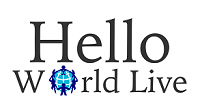A security ban, at times, becomes a necessary practice so that an organization can protect its data. Many such security practices surfaced in 2020 because hackers started finding more victims during COVID. The one major reason that made corporate companies and merchants so vulnerable is that every business – the ones that operated offline before COVID – had to use the online platform to sustain. And, it’s a no brainer that most new users and firms were underprepared or entirely unprepared to handle cybersecurity threats posed by hackers.
With the sharp increase in hacking cases that 2020 witnessed, cybersecurity experts now insist on using advanced security practices since hackers have started using advanced phishing techniques too – spear phishing, social engineering, vishing and Pharming.
The techniques that we are talking about are listed below.
- Zero Trust Approach
This is a new safety technique where companies start offering need-based access only. It works because unlike earlier where all employees could access all the data, they are now able to access only that data that’s relevant to them.
To explain better here’s an example – an employee in the HR department will not have access to the network where the financial data of the company is stored. Which also means that hackers will not be able to access the entire data of the company by hacking in any one system. Only the systems existing on the network that the compromised system is using will be left vulnerable.
- Network Segmentation
It basically works similarly to how zero trust approach works.
A company has many networks and no 2 networks have anything to do with each other – they are attached on different routers, they can’t pass information into the systems on other networks without permission, and they have just the relevant bit of information stored in them.
As a result, a hacker will again not be able to attack the entire organization at once.
- MFA or 2-FA For Protection
Yes, a strong backdoor password will protect a system. But it’s much better if it’s not the only layer that has to be cleared. 2-FA is two factor authentication where 2 more security layers have to be crossed to access the system. And MFA is multi-factor authentication where 3 or more layers are added.
These practices lessen the chances that a hacker will be interested in hacking into a system that’s so secure.
All in all, the old password habits and firewall and antivirus are still important. But added security techniques on top of the usual security practices make a system much more safer.

